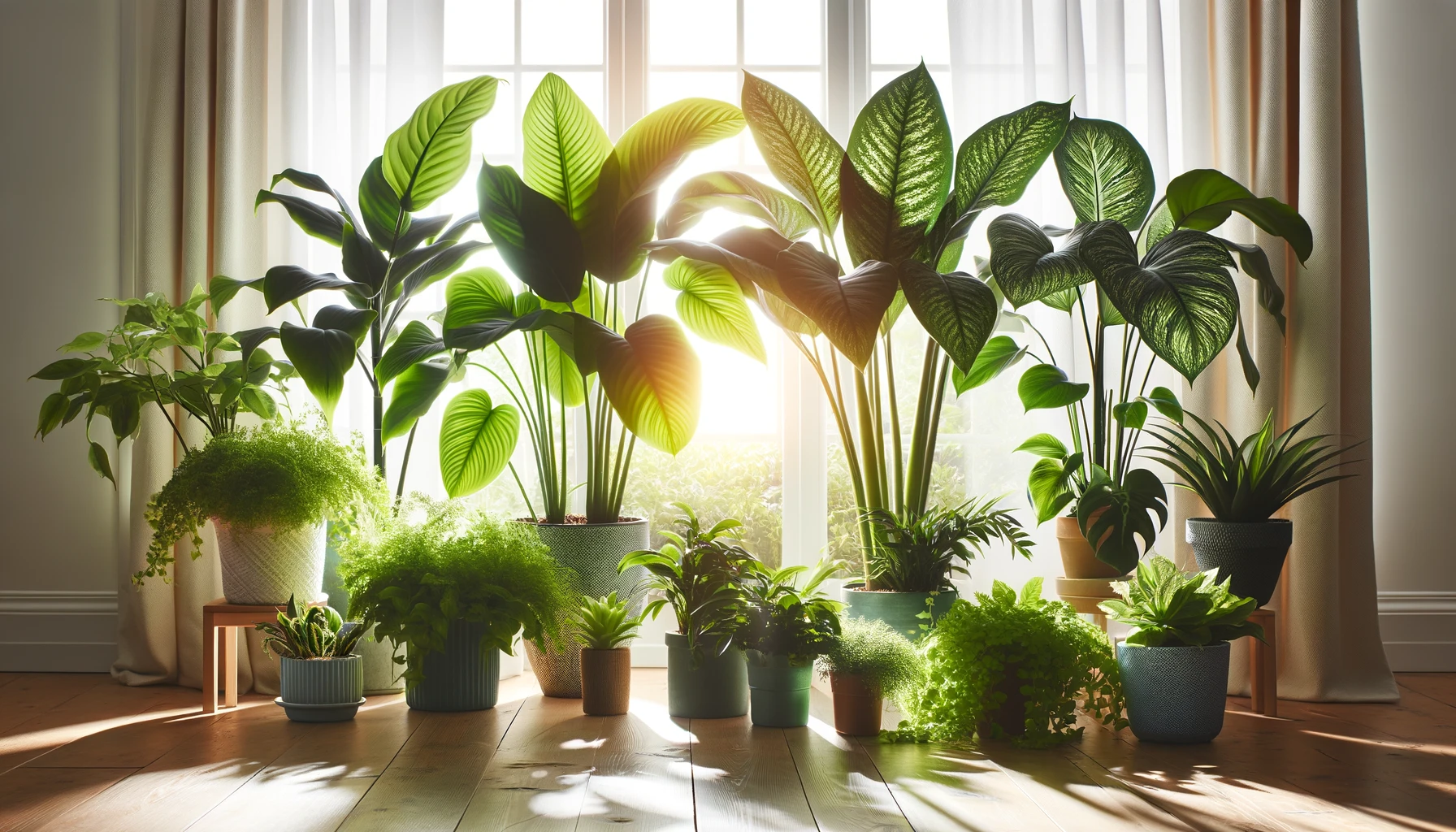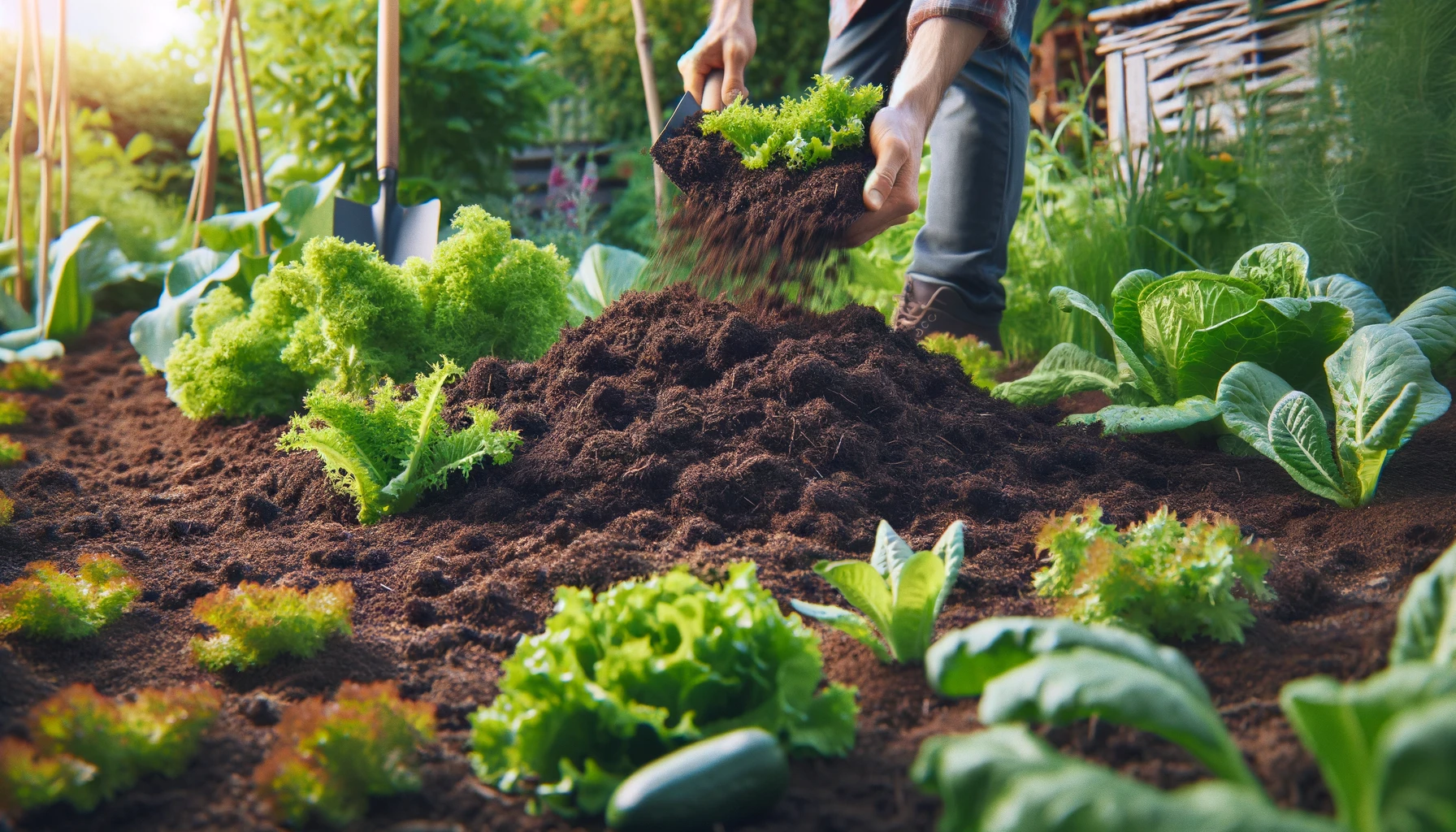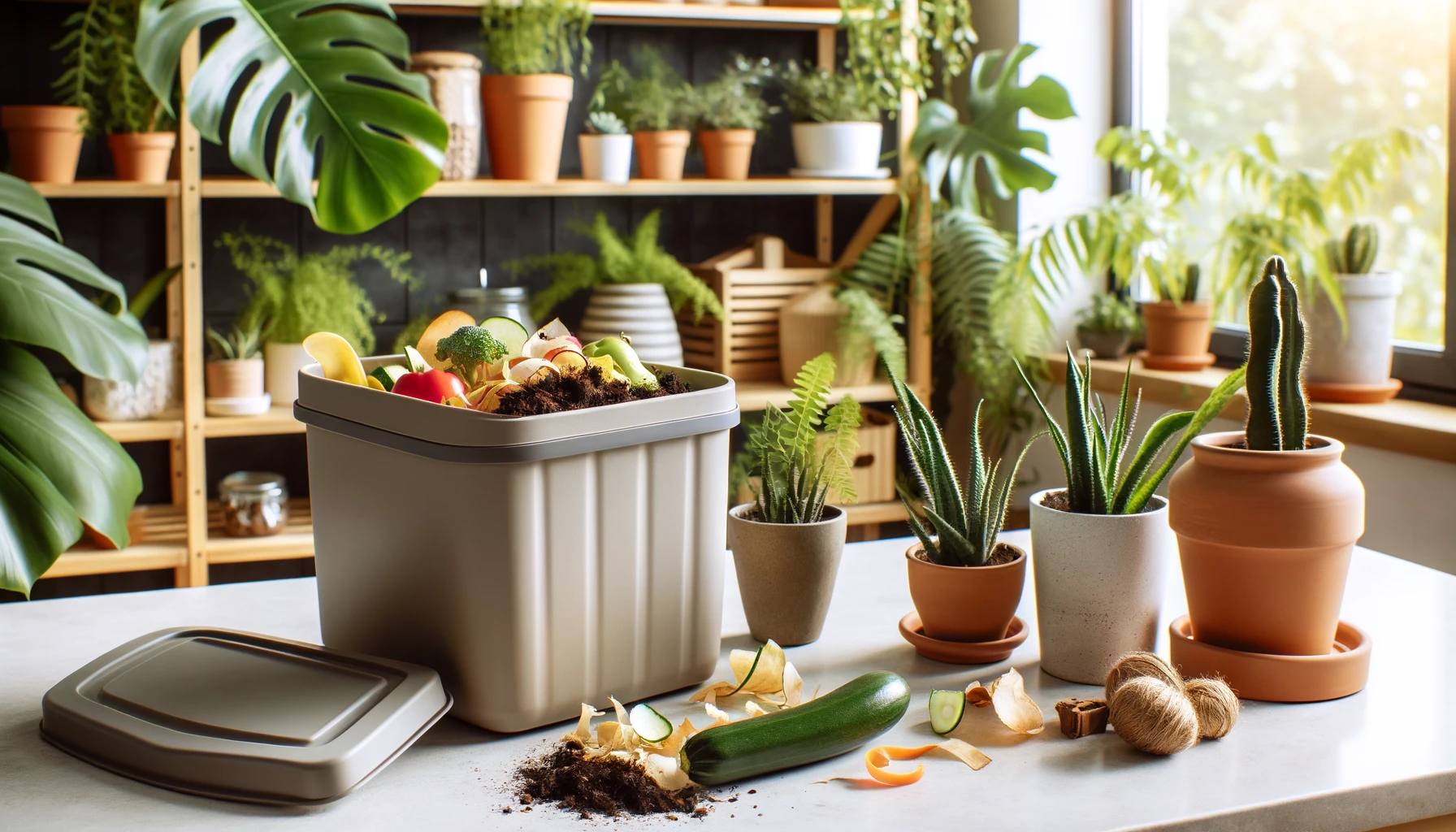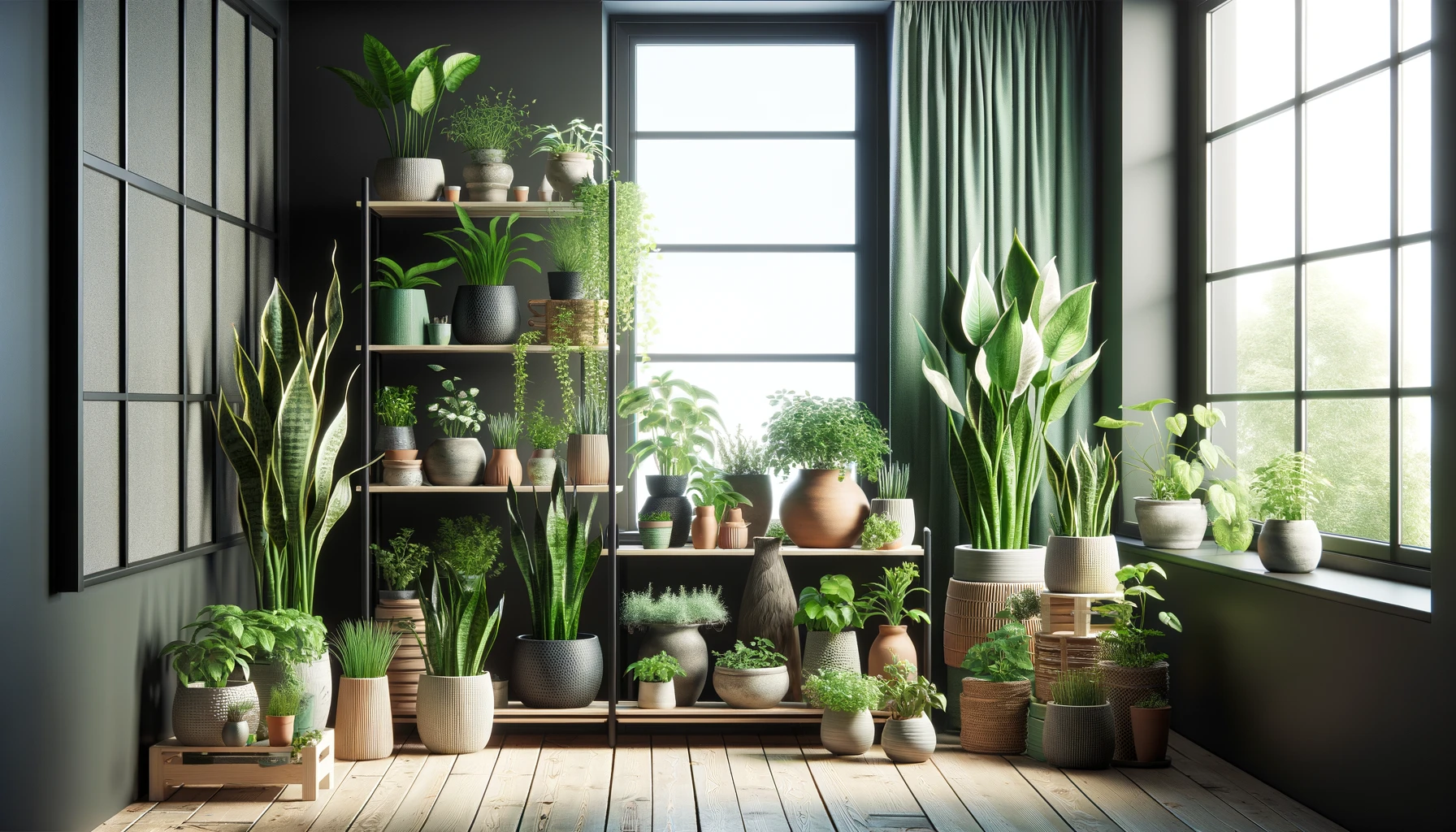This post contains affiliate links. If you buy something from one of our links we may earn a commission. Thanks
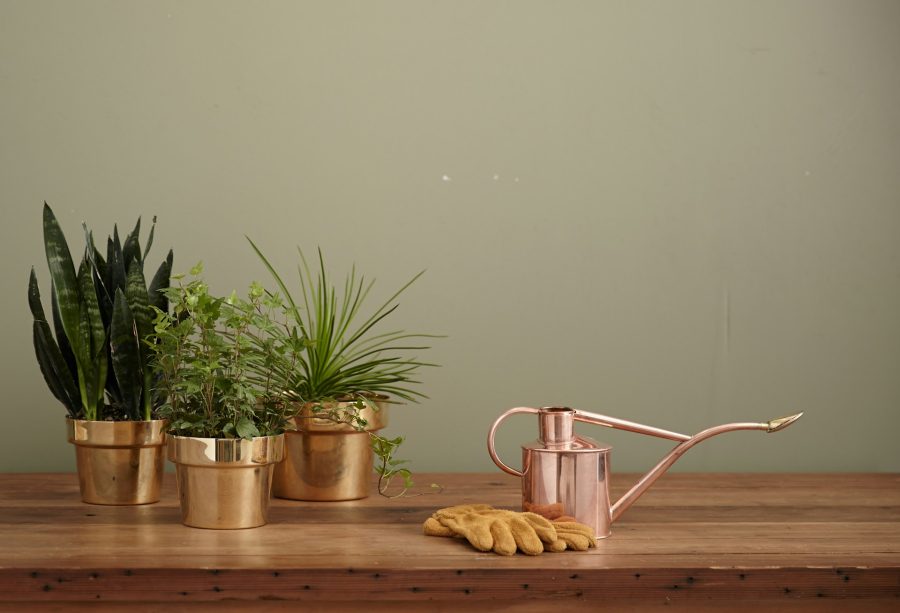
Learn how to conserve water in your indoor garden with practical tips and techniques. Discover simple ways to make your indoor gardening more eco-friendly and sustainable.
How to Conserve Water in Your Indoor Garden Key Takeaways:
- Conserving water in your indoor garden involves:
- Using efficient watering techniques, such as drip irrigation
- Mulching, and using moisture-retentive soil mixes
- Collecting rainwater
- Grouping plants with similar water needs contributes to water conservation in indoor gardening.
Embarking on a journey of how to conserve water in your indoor garden can transform your green space into an eco-friendly oasis.
From efficient watering methods to innovative conservation techniques, let’s explore the steps to ensure your plants thrive while minimizing water usage.
How to Conserve Water in Your Indoor Garden
The Importance of Water Conservation in Indoor Gardening
Water is a precious resource, and conserving it is crucial, especially in indoor gardening.
By using water wisely, we can keep our plants healthy while also helping the environment.
Let’s explore the importance of water conservation in indoor gardens and how it impacts both our plants and the planet.
Why Water Conservation Matters in Indoor Gardens
Conserving water in indoor gardens is important for several reasons:
- Plant Health: Overwatering can harm plants. Using the right amount of water keeps them healthy.
- Resource Efficiency: By conserving water, we use resources more efficiently, which is better for the environment.
- Environmental and Sustainability Impact
Water conservation in indoor gardening also has a positive impact on the environment and sustainability:
- Reducing Waste: Using less water means less waste, which is good for the planet.
- Sustainability: By conserving water, we help ensure there’s enough for everyone, now and in the future.
By understanding the importance of water conservation in indoor gardening, we can take steps to use water wisely and make a positive impact on the environment.
Understanding Indoor Garden Water Needs

Every indoor plant has its own water needs. Some like to stay moist, while others prefer to dry out between waterings. Knowing what each plant needs is key to keeping them happy and healthy.
Assessing Water Requirements
- Research Your Plants: Look up the water needs of each plant in your indoor garden.
- Observe Plant Signs: Watch for signs that your plants need water, like droopy leaves or dry soil.
Tips for Monitoring Soil Moisture
- Use Your Finger: Stick your finger about an inch into the soil. If it feels dry, it’s time to water.
- Consider a Moisture Meter: These tools can tell you how wet the soil is, taking the guesswork out of watering.
- Watch for Drainage: Make sure excess water can drain out of your pots to prevent overwatering.
By understanding and meeting the water needs of your indoor plants, you can keep them thriving while conserving water.
Efficient Watering Techniques
Using the right watering techniques can make a big difference in how well your indoor plants grow. It’s all about giving them just the right amount of water they need.
Best Practices for Watering
- Water Deeply: Give your plants a good soak, so the water reaches the roots. This helps them grow deep and strong.
- Let Soil Dry: Wait until the top inch of soil is dry before watering again. This prevents overwatering.
- Use Room Temperature Water: Cold water can shock plants. Use water that’s at room temperature for best results.
Benefits of Using the Right Tools
- Watering Cans with Long Spouts: These help you water the base of the plant, right where the roots are. It’s a great way to make sure the water goes exactly where it’s needed.
- Self-Watering Pots: These pots have a reservoir that keeps the soil moist for a longer time. They’re great for plants that like consistent moisture and for when you’re away.
By following these tips and using the right tools, you can water your indoor plants efficiently and help them thrive.
Mulching for Moisture Retention
Mulching isn’t just for outdoor gardens. It can be a game-changer for indoor plants too.
By adding a layer of mulch to your pots, you can help keep the soil moist and reduce how often you need to water.
Benefits of Mulching Indoor Plants
- Reduces Evaporation: Mulch helps slow down the evaporation of water from the soil, keeping it moist for longer.
- Conserves Water: With less water evaporating, you’ll need to water less often, saving water and time.
- Regulates Soil Temperature: Mulch can help keep the soil temperature more stable, which is good for plant roots.
Types of Mulch for Indoor Gardens
- Coco Coir: Made from coconut husks, coco coir is a sustainable option that holds moisture well.
- Moss: Sphagnum moss or sheet moss can be used as a top layer to retain moisture.
- Gravel or Pebbles: These can add a decorative touch while helping to reduce evaporation.
- Bark Chips: Small bark chips can be used for larger pots and add a natural look to your indoor garden.
By using mulch in your indoor pots, you can help your plants stay hydrated and healthy while conserving water.
Using the Right Soil Mix
Choosing the right soil mix is crucial for water conservation in indoor gardening.
The ideal mix should drain well while retaining enough moisture to keep plants hydrated.
Importance of Well-Draining, Moisture-Retentive Soil
- Prevents Overwatering: Well-draining soil allows excess water to flow out, preventing waterlogged roots, which can lead to root rot.
- Maintains Moisture: Soil that retains moisture reduces the need for frequent watering, conserving water and ensuring plants have a steady supply.
Recommendations for Water-Efficient Soil Mixes
- Coco Coir: Made from coconut husks, coco coir is an excellent base for a water-efficient soil mix. It retains moisture while allowing excess water to drain, promoting healthy root growth.
- Perlite or Vermiculite: Adding perlite or vermiculite to your soil mix improves drainage and aeration, preventing waterlogging.
- Compost: Incorporating compost into your soil mix adds organic matter, which helps retain moisture and provides nutrients to your plants.
By using a soil mix that balances drainage and moisture retention, you can conserve water and ensure your indoor plants thrive.
Incorporating Drip Irrigation Systems
Drip irrigation is a smart way to water indoor plants. It delivers water right to the roots, reducing waste and ensuring your plants get just what they need.
Advantages of Drip Irrigation
- Water Efficiency: Drip systems use water more efficiently than traditional watering methods.
- Consistent Moisture: They provide a steady supply of water, keeping soil moisture levels consistent.
- Reduced Overwatering Risk: By delivering water slowly and directly to the roots, there’s less risk of overwatering.
Setting Up a Simple Drip Irrigation System
- Gather Supplies: You’ll need a water reservoir (like a large container or bucket), tubing, emitters (drip heads), and a timer if you want to automate the system.
- Arrange Your Plants: Place your plants where you want them and plan where the tubing will run.
- Cut and Connect Tubing: Cut the tubing to the lengths you need and connect it to your water reservoir. Run the tubing to each plant.
- Install Emitters: Attach emitters to the tubing near the base of each plant. These will drip water slowly into the soil.
- Fill the Reservoir: Fill your water reservoir with water. If you’re using a timer, set it to water your plants at regular intervals.
- Monitor and Adjust: Check your system regularly to make sure it’s working correctly. Adjust the flow rate or timer settings as needed to ensure your plants are getting the right amount of water.
Using the Blumat System for Indoor Plants
The Blumat system is an excellent option for indoor gardens. It uses clay cones to control the watering, providing plants with the exact amount of water they need.
Here’s how to set it up:
- Place the Clay Cones: Insert the clay cones into the soil near your plants.
- Connect the Tubing: Attach the tubing to the cones and run it to your water reservoir.
- Set Up the Reservoir: Fill a container with water and place it higher than your plants to allow gravity to feed the system.
- Adjust as Needed: Monitor your plants and adjust the placement of the cones or the water level in the reservoir as needed to ensure optimal watering.
By incorporating a drip irrigation system like Blumat, you can save time and water while keeping your indoor garden healthy and hydrated.
Collecting and Using Rainwater
Using rainwater for your indoor garden is a great way to conserve water and provide your plants with a natural water source.
Methods for Collecting Rainwater
- Rain Barrels: Place rain barrels under your downspouts to collect water from your roof. Make sure to use a mesh screen to keep out debris and mosquitoes.
- Rain Chains: Install rain chains to direct water from your gutters into a collection container or directly into your garden.

- Rooftop Collection Systems: If you have a larger roof, you can set up a more extensive system to collect and store rainwater.
Tips for Storing and Treating Rainwater
- Cover Your Containers: Keep your rainwater containers covered to prevent algae growth and keep out insects and debris.
- Use Within a Week: Try to use collected rainwater within a week to prevent stagnation.
- Filter Before Use: If your rainwater has debris or particles, filter it before using it for your plants.
- Test pH Levels: Rainwater can be more acidic than tap water. Test the pH levels and adjust them if necessary to match your plants’ needs.
By collecting and using rainwater for your indoor garden, you can reduce your reliance on tap water and provide your plants with a natural and sustainable water source.
Grouping Plants with Similar Water Needs
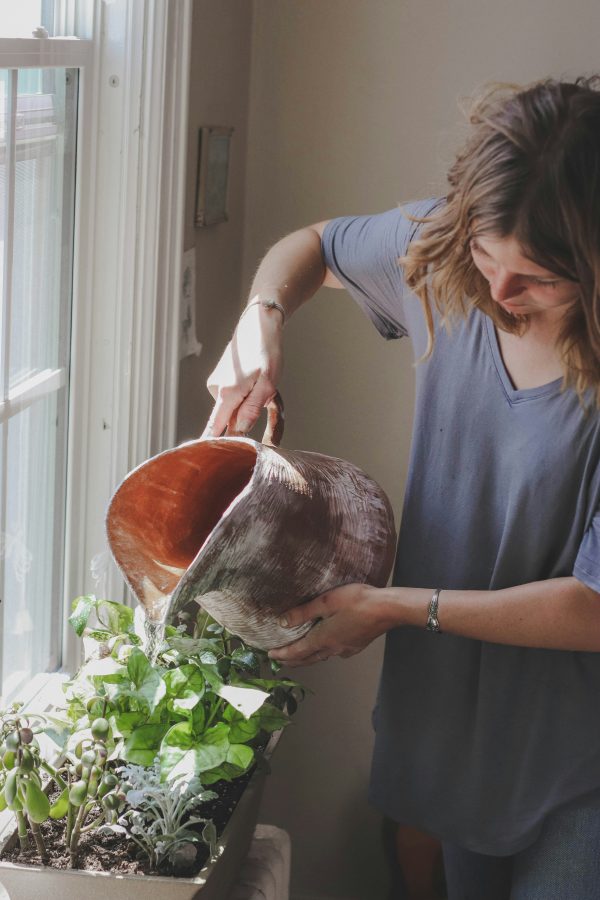
Grouping plants with similar water needs is a smart way to simplify your watering routine. It ensures that each plant gets just the right amount of water, without over or under-watering.
Organizing Plants by Water Requirements
- Create Zones: Divide your indoor garden into zones based on plants’ water needs. Place plants that need more water together and those that need less water together.
- Label the Zones: Label each zone with the watering frequency required, so you can easily remember how often to water each group.
Examples of Plant Groupings
- High Moisture Needs: Ferns, African violets, and peace lilies all prefer consistently moist soil.
- Moderate Moisture Needs: Spider plants, pothos, and philodendrons like their soil to dry out slightly between waterings.
- Low Moisture Needs: Succulents, cacti, and snake plants prefer dry conditions and need water only infrequently.
By grouping plants with similar water needs, you can streamline your watering routine and ensure that each plant gets the care it needs to thrive.
Regular Maintenance to Prevent Water Waste
Regular maintenance is key to ensuring that your indoor garden is watered efficiently and without waste.
Routine Checks for Leaks
- Inspect Watering Systems: Regularly check your watering cans, hoses, and drip irrigation systems for leaks or cracks.
- Fix Leaks Promptly: If you find a leak, repair it as soon as possible to prevent water waste.
Pruning and Grooming Plants
- Remove Dead Leaves: Regularly remove dead or yellowing leaves to ensure that water is used efficiently by the plant.
- Prune Overgrown Plants: Pruning helps plants focus their energy on new growth, which can improve water uptake.
By performing regular maintenance and keeping your plants well-groomed, you can prevent water waste and keep your indoor garden thriving.
Educating Yourself on Plant Watering Needs
Learning about the specific water needs of your indoor plants is crucial for effective water conservation.
Resources for Learning About Plant Watering Needs
Plant Care Guides: Look for care guides specific to each type of plant you have. Websites like Gardening Know How offer detailed information on various plants.
Books: Books like The House Plant Expert by Dr. D.G. Hessayon
or How Not to Kill Your Houseplant by Veronica Peerless provide valuable insights into plant care and watering needs.
Local Garden Centers: Staff at your local garden center can be a great resource for advice on watering specific plants.
Understanding Plant Needs for Water Conservation
- Tailored Watering: By understanding the exact needs of each plant, you can tailor your watering routine to avoid over or under-watering, conserving water.
- Healthy Plants: Proper watering leads to healthier plants, which are more efficient at using water and can better withstand periods of drought.
Educating yourself on the water needs of your indoor plants is an essential step in conserving water and ensuring the health and vitality of your indoor garden.
10. Embracing Technology for Water Conservation
Technology can play a big role in helping you conserve water in your indoor garden.
Gadgets and Apps for Water Monitoring
- Moisture Sensors: Devices can monitor soil moisture levels and send alerts when it’s time to water.

- Smart Watering Systems: Systems like the Eve Aqua or Rachio 3 Smart Sprinkler Controller can automate watering based on real-time weather data and plant needs.

- Water Usage Apps: Apps can help you keep track of how much water you’re using for your plants.
Smart Home Devices for Indoor Garden Watering
- Smart Plugs: Use smart plugs to control water pumps or irrigation systems with your smartphone or voice commands.
- Home Automation Systems: Integrate your watering system with home automation platforms like Apple HomeKit, Google Home, or Amazon Alexa for seamless control and scheduling.
By embracing technology, you can make watering your indoor garden more efficient and precise, ensuring that your plants get the right amount of water while conserving this valuable resource.
How to Conserve Water in Your Indoor Garden Conclusion
Water is a precious resource, and every drop counts. By adopting water-conserving practices in our indoor gardens, we can make a significant difference in our water usage.
Learn more: Eco-Friendly Gardening
Adopting Water-Conserving Practices
- Start Small: Begin with simple changes like using a watering can with a long spout or mulching your plants.
- Educate Yourself: Learn about the specific water needs of your plants and adjust your watering routine accordingly.
- Embrace Technology: Consider using moisture sensors, smart watering systems, or apps to help monitor and control water usage.
The Collective Impact of Individual Efforts
When we all do our part to conserve water, the collective impact can be substantial. By sharing our knowledge and experiences with others, we can inspire more people to join the effort and contribute to a more sustainable future.
By embracing these water-conserving practices, we can ensure that our indoor gardens thrive while also doing our part to protect this vital resource. For more information and tips on water conservation, visit Water Use It Wisely and EPA WaterSense.
Resources: Further Learning on Water Conservation in Indoor Gardening
To deepen your understanding of water conservation in indoor gardening, here are some authoritative resources:
- UMass Amherst – Water Conservation in the Home Garden and Landscape: This resource provides guidelines for efficient water use in gardens and landscapes, emphasizing the importance of soil improvement and conscientious watering practices. Read more.
- Penn State Extension – Household Water Conservation: This article discusses the historical changes in domestic water consumption and offers insights into water-efficient plumbing fixtures, including toilets and showerheads, to conserve water in households. Learn more.
- UNH Extension – Water Conservation Fundamentals in Gardening and Landscaping: This resource highlights fundamental water conservation practices in gardening and landscaping, providing tips for outdoor water use and drought management. Explore here.
By exploring these resources, you can gain a comprehensive understanding of water conservation techniques applicable to indoor gardening and beyond, contributing to a more sustainable and water-efficient environment.










